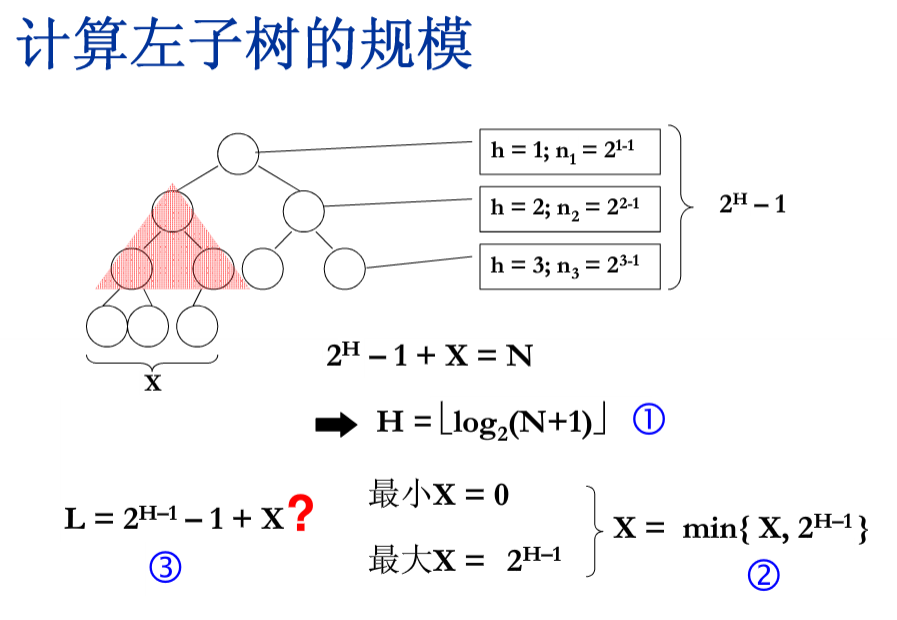A Binary Search Tree (BST) is recursively defined as a binary tree which has the following properties:
- The left subtree of a node contains only nodes with keys less than the node's key.
- The right subtree of a node contains only nodes with keys greater than or equal to the node's key.
- Both the left and right subtrees must also be binary search trees.
A Complete Binary Tree (CBT) is a tree that is completely filled, with the possible exception of the bottom level, which is filled from left to right.
Now given a sequence of distinct non-negative integer keys, a unique BST can be constructed if it is required that the tree must also be a CBT. You are supposed to output the level order traversal sequence of this BST.
Input Specification:
Each input file contains one test case. For each case, the first line contains a positive integer N (≤). Then N distinct non-negative integer keys are given in the next line. All the numbers in a line are separated by a space and are no greater than 2000.
Output Specification:
For each test case, print in one line the level order traversal sequence of the corresponding complete binary search tree. All the numbers in a line must be separated by a space, and there must be no extra space at the end of the line.
Sample Input:
10 1 2 3 4 5 6 7 8 9 0
Sample Output:
6 3 8 1 5 7 9 0 2 4



1 #include <cstdio> 2 #include <math.h> 3 #include <algorithm> 4 5 using namespace std; 6 7 int a[1010]; 8 int T[1010]; 9 10 int GetLeftLength(int n) 11 { 12 int H=log(n+1)/log(2); 13 int X=n+1-pow(2,H); 14 if(X>pow(2,H-1)) 15 X=pow(2,H-1); 16 int L=pow(2,H-1)-1+X; 17 return L; 18 } 19 20 void solve(int ALeft,int ARight,int TRoot) 21 { 22 int n=ARight-ALeft+1; 23 if(n==0) return; 24 int L=GetLeftLength(n); 25 T[TRoot]=a[ALeft+L]; 26 int LeftTRoot=TRoot*2+1; 27 int RightTRoot=LeftTRoot+1; 28 solve(ALeft,ALeft+L-1,LeftTRoot); 29 solve(ALeft+L+1,ARight,RightTRoot); 30 } 31 32 int main() 33 { 34 int n; 35 scanf("%d",&n); 36 for(int i=0;i<n;i++) 37 { 38 scanf("%d",&a[i]); 39 } 40 sort(a,a+n); 41 solve(0,n-1,0); 42 for(int i=0;i<n;i++) 43 { 44 if(i==0) 45 printf("%d",T[i]); 46 else printf(" %d",T[i]); 47 } 48 return 0; 49 }
